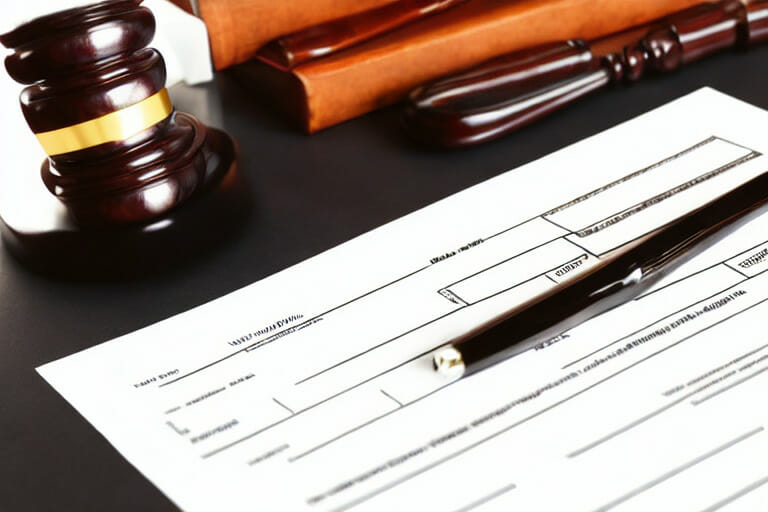
Highly detailed laws in each state govern legal action for wrongful death. But some fundamental ideas apply to most jurisdictions, regardless of the specifics of the wrongful death claim or the litigation process. The “Plaintiff” in a civil lawsuit, often a close relative bringing the claim on behalf of all the deceased’s heirs in a wrongful death case, is the individual who files the complaint.
Knowing the elements of a wrongful death lawsuit is the first step toward winning a wrongful death lawsuit. Even unintentional fatalities do not always give rise to wrongful death claims. Certain requirements must be met for survivors to initiate these cases.
4 Elements Of A Wrongful Death Lawsuit
Understanding the components of the lawsuit is crucial if you have a wrongful death claim. The several facts that the plaintiff must demonstrate are true to succeed in the action are known as the components.
You need to prove everything to get a verdict and be compensated for your losses. What you need to know about the components of wrongful death claims is provided below.
Negligence
This is the failure to act with ordinary, reasonable care. Intentional conduct to purposefully harm another person can satisfy this element in place of negligence. The surviving family members typically have the right to file a civil case demanding compensation from the negligent party if a person’s death was brought about by their carelessness or another person or entity.
In wrongful death cases, a highly qualified and experienced wrongful death attorney must establish that the defendant’s carelessness, recklessness, or negligent behavior contributed in whole or in part to the death of the plaintiff’s relative.
Death Of Another Person
The components of a wrongful death action come from the components of a personal injury claim since underlying personal injury actions are the source of wrongful death actions. Cases involving wrongful death are unique. It’s essential to adjust the evidence to the specifics of your scenario.
Causation
If a negligent act caused the death, causation is a necessary component of a wrongful death action. An act of negligence must be shown to have caused the victim’s death directly or indirectly.
In the area of negligence, there are two different kinds of causation: proximate cause and cause. Cause, also known as a fault, indicates that the person was the reason behind your loved one’s passing; if not for the person’s deeds, your loved one would not have died.
On the other hand, proximate cause examines the degree of personal accountability in the circumstance that led to the death of your loved one. Factual evidence and legal arguments may be needed to counter causality challenges. Determined by the foreseeability of the death resulting from the negligent act, causation may be determined.
Damages
Damages are another one of the wrongful death elements to consider when you’re looking to file a criminal case with wrongful death attorneys when an individual must be able to demonstrate damage caused by the careless behavior of the at-fault party to be declared negligent.
Since the untimely loss of your loved one was the “injury” that was sustained in a wrongful death lawsuit, it is easy to demonstrate this element. The following loss categories for which a wrongful death claimant may be eligible for damages include:
- Pre-death “pain and suffering” of the departed (this is often called a “survival” claim).
- Expenses for medical care incurred by the deceased victim before death as a result of the injury
- Burial and funeral expenses
- Reduction in the dead person’s anticipated income
- Loss of any inheritance brought on by the deceased
- The amount paid for the services the deceased would have rendered
- Loss of the support, instruction, and nurturing the departed would have offered.
- Loss of affection and company
- Loss of consortium
How Can You Prove Wrongful Death?
A wrongful death claim may be filed when a victim who would have otherwise been entitled to compensation for injuries is killed due to the defendant’s negligent behavior.
The plaintiffs (often represented by the deceased victim’s estate) in a wrongful death action must satisfy the same standard of proof that the victim would have needed to satisfy had the victim been alive to hold the defendant accountable.
The plaintiff must establish negligence by showing that the defendant owed the victim a duty of care, that there was a breach of duty, that the violation was a direct and immediate cause of the death and that the death resulted in the losses the plaintiff is attempting to collect.
You must collect proof for each claim element in order to establish wrongful death. It’s a must to provide evidence for each component of your argument. The claim is invalid if any of the case’s components are missing. Numerous distinct types of evidence exist, including:
- Medical expenses
- Funeral expenses
- Live, in-person witness evidence on many subjects.
- Seasoned witnesses
- Reconstruction of accidents
- Regulations, instructions, and operational manuals
- Employer history
Cases involving wrongful death are unique. It’s essential to adjust the evidence to the specifics of your scenario.
What If You Lose A Wrongful Death Case?
The surviving family members who filed for a wrongful death case may work with an experienced attorney with a long background in arguing cases on wrongful death law. Damages are sought in wrongful death litigation to make up for the losses suffered by the surviving, including burial costs, lost companionship, and pay from the deceased’s job.
Legal actions may fail if the plaintiffs aren’t aware of their rights, restrictions, and deadlines. A seemingly insignificant mistake or forgotten detail can result in losing their case and reduce their reimbursement altogether.
When pursuing a wrongful death case, it’s crucial to avoid making the following mistakes:
- Conflict in the family
- Having a public discussion of the situation
- Conversing with the insurance provider
- Taking too hastily the settlement offer
- Not taking into account accountable parties
- Waiting too long to file a lawsuit
- Moving forward with the case without a lawyer
State-by-state wrongful death laws vary; you should speak with an eligible wrongful death lawyer about your eligibility to submit a claim based on your circumstances and timeframe.
Each year, thousands of lives are lost, and millions of dollars are lost to wrongful death lawsuits in the United States. Contact Reeves Law Group immediately for a free case evaluation with our experienced lawyers regarding a possible wrongful death claim by calling (800) 644-8000 or completing our online contact form.
Statistics On Wrongful Deaths In The US
- The CDC says that the number one cause of death in unintentional accidents in 2005 was 45,343 motor vehicle fatalities.
- Five thousand two hundred twelve vehicles involved trucks in wrongful deaths in the US in 2020.
- Each year, avoidable medical mistakes cause 98,000 fatalities among Americans.
- In 2021, the average payout for major permanent injuries was over $610,000, severe permanent injuries at $450,000, and wrongful deaths at over $386,000.
- Unintentional poisoning led to 87,404 wrongful deaths in 2020.
Sources:
https://www.cdc.gov/nchs/fastats/accidental-injury.htm
https://wonder.cdc.gov/controller/saved/D76/D266F029
https://biotech.law.lsu.edu/cases/evidence/Baker_v_Guzon.htm
https://www.motorcyclelegalfoundation.com/motorcycle-injuries/motorcycle-accident-wrongful-death/
https://www.law.cornell.edu/wex/wrongful_death
https://www.annuity.org/structured-settlements/wrongful-death-claims/
https://www.asbestos.com/mesothelioma-lawyer/lawsuit/wrongful-death/










